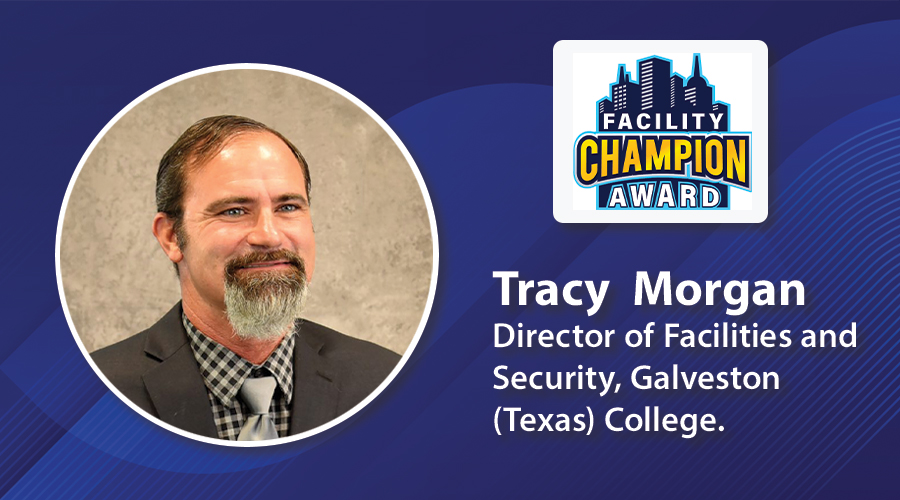Facility Condition Assessments Deliver Benefits for Building Owners
Facility condition assessments give owners and executives critical information in developing long-term plans and investments.
By Dan Hounsell, Senior Editor
Understanding the condition of facilities is essential for building owners and facility executives in large institutional and commercial facilities nationwide in order to set and achieve long-term goals for their building portfolios. Among their priorities is ensuring their facilities remain in safe, reliable condition, operate efficiently and retain their long-term value, and facility condition assessments (FCA) are one tool at their disposal.
“When (an FCA is) done correctly, it really can help focus the spending for any type of institutional or commercial facility, especially if it’s done correctly and focused and if there’s follow-up on the results of the assessment,” Matt Mowrer, associate at O'Donnell & Naccarato, a structural engineering firm. “Otherwise, it’s just blindly spending money.”
Strategies for success
A successful FCA requires that building owners understand the reasons for investing valuable resources in the process and clearly communicating those reasons to everyone involved in the process. Too often, that step is a challenge for owners.
“We recently had one where the owner came to us and said, ‘I’m not really sure what I’m asking for here,’” Mowrer says, adding that organizations most often explore an FCA for one of three reasons — safety, maintenance and long-term planning.
“We get these calls either because there’s an immediate condition — for example, safety — or it’s a long-term planning issue,” he says.
Safety generally tops the priority list.
“They ask, ‘Is there anything going on with our building right now that we should look at or that we know is a problem?’” Mowrer says. “They want to find out what is going to happen in the near future for maintenance. The say, ‘We have X amount of dollars to spend in 2026, for instance. What’s our highest priority? Where should we spend our maintenance item?’”
An FCA also can give owners valuable information they need in making financial investments in facilities.
“Let’s look at globally how we can start to put a plan together for what we’re going to need to spend, what we’re going to need to fundraise and where to accurately spend a lot of this money wisely down the line,” he says.
Along with setting clear goals for the assessment process, Mowrer says owners need to ensure that the team involving in scoping and overseeing the process represents three key players in the organization.
“All three should be in that initial kickoff meeting because they all have different goals, and they all have different aspects and viewpoints of the campus,” he says. Essential to the process are those who know facilities best — technicians.
“We usually see the facilities people,” he says. “They’re in the trenches. They see everything. They have a vast knowledge, especially on campus. Multiple times, we’ve come across people who say, ‘I’ve been here 30 years. I know this. I know that.’ That is super valuable information.
“When it comes down to it, they’re the decision makers. Now maybe the facilities department isn’t making those final decisions, but they know the most about what they see on a day-to-day basis as to what’s really bad.”
In-house project and facilities managers also play a central role in the assessment process.
“Usually, it’s a project manager,” he says. “They deal with internal structures, external facades, roofing, and they kind of have a global sense of the building as a whole. I’d say project managers are most often the people we’ve come across that spearhead the projects.”
Finally, the team needs to include what Mowrer refers to as “the money people.”
“It’s usually somebody in finance that’s looking for the bottom dollar,” he says. “They say, ‘I have budgets to meet. I have people to answer to about how much money I need for X amount of years.’ Usually, when we give them the report, they go right to the big number and say OK.”
Critical considerations
Planning and performing an FCA is complex because of the parties involved and the facilities to be inspected. It also is critical to the organization because of the impact it can have on capital planning and other big-picture issues. For these reasons, owners need to focus on two critical elements of the process. The first element should happen at the start of the process.
“The most important step for us is understanding the client’s goal and for them to be clear on what their end use is of the deliverable,” Mowrer says. “Sometimes we’ll have clients who say, ‘I need a campus assessment,’ but they don’t really understand what that’s for or how the data we will provide them is going to be used.
“We can help direct them and where to spend money that they may not want to spend down the line. Knowing the end use of the assessment is one of the first things we have to ask as an engineer, as a design firm. Sometimes it does come across not so clear. They just do it because they’ve been doing it for X amount of years. That’s really not the way to do it.”
The second critical element occurs toward the end of the process — understanding the FCA’s results.
“We help them understand the deliverable because it could be a lot of information,” he says, adding that he recommends “multiple follow-up meetings, maybe one right after everybody’s had a chance to digest it and maybe six months down the line after the new budget planning is in place.
“Then maybe a year later when the next cycle is up and it’s just a half-hour call to say, ‘You did 2025 repairs. This is what we have for 2026. Did anything pop up at the campus that you think we should look at or talk about? Or you got your budget slashed. What can we do?’”
Dan Hounsell is senior editor for the facilities market. He has more than 30 years of experience writing about facilities maintenance, engineering and management.
Related Topics:












